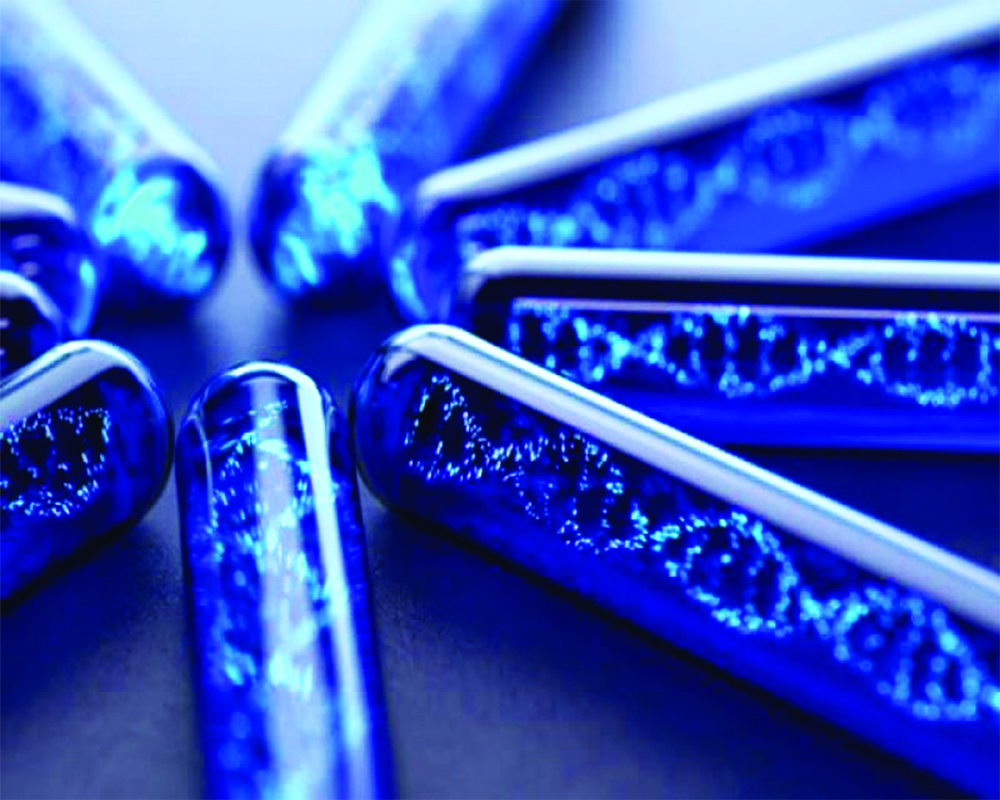In this age of unprecedented technological revolution, genetic engineering is fast occupying the centre stage
In this age of unprecedented technological revolution, genetic engineering is fast occupying the centre stage. Susan Hockfield, a Professor of Neuroscience at the Massachusetts Institute of Technology (MIT), says that virus-powered batteries, protein-based water filters, cancer-detecting nanoparticles, mind-reading bionic limbs, computer-engineered crops, and so on, have the potential to overcome some of the greatest humanitarian, medical and environmental challenges of our time. These are going to be next generation products that have the potential to reshape our lives. For instance, the discovery of products like aquaporin to purify water for our use that functions like a parking lot that permits only cars identified with a specific transponder to enter, is nature’s marvel. All these frontier technologies have inputs of genetic engineering.
Genetic engineering has come a long way since 1971, when two scientists, Berg and Jackson, created the first molecules of a recombinant DNA. Many milestones have been accomplished since then to make genetic engineering almost child’s play in the hands of a molecular biologist. But gene therapy, which genetic engineering promised, has been fraught with pitfalls despite a multitude of methodologies. As a result, inherited disorders resulting from aberrations in one’s genes could not be treated by replacing or correcting a faulty gene. Correcting the gene in its specific location was an issue and when this was overcome by employing viruses, our immune system would play the spoilsport apart from other issues that sprung up. Ever since the failure of the Jesse Gelsinger trial for the cure of a rare metabolic disorder called ornithine transcarbamylase deficiency syndrome, (OTCD) in 1998, gene therapy was left gasping for breath amid stringent regulations. This is where a serendipitous observation of bacteria having the ability to specifically target the DNA of viruses to inactivate the invader, provided the breakthrough to overcome many of the pitfalls of the earlier methodologies.
CRISPR and GENE editing: CRISPR technology is a simple yet powerful tool for editing genomes. It allows researchers to easily alter DNA sequences and modify gene function. Its many potential applications include correcting genetic defects, treating and preventing the spread of diseases and improving crops. The CRISPR-Cas9 can do the job easily and precisely as CRISPR is a part of the bacterial immune system and germs, too, can get sick from viruses. Bacteria fight them by chopping their DNA or RNA with CRISPR sequences and then remember them by pasting their DNA bits into their own genome, allowing to ward off any future infections. These genetic scissors, whose use for targeted modification of genomic DNA was perfected by Jennifer Doudna and Emmanuelle Charpentier, have given a new life to genetic engineering and gene therapy. Both these scientists were the recipients of the Nobel Prize in Chemistry in 2020.
The use of CRISPR-Cas9: Many diseases that were incurable through traditional means can now be treated easily, thanks to genetic engineering. There are ongoing clinical trials using CRISPR-based approaches to treat monogenic inherited diseases such as sickle cell anemia, childhood blindness and so on. It holds the promise to treat many other diseases such as cancer, autoimmune disorders and polygenic genetic disorders in future.
Apart from medical applications, it is being used to genetically modifying crops to make them resistant to viruses, make leaner pigs, help yeast make better beer, make mosquitoes infertile and so on. It is also possible to recreate an extinct species, so a ‘Jurassic Park’ could actually be a reality in the future.
Research is also underway for the use of CRISPR gene editing that could make us less vulnerable to pandemics, cancer, Alzheimer’s and other diseases. Mammals have a gene known as p53 that encodes the proteins that suppress the growth of cancerous tumours. Humans and most other mammals have only one copy of this gene, whereas elephants have 20 copies, and they almost never get cancer. Hence, research is ongoing to double this gene in human beings.
Up till 2020, over a dozen clinical trials were underway for a disease called acute myeloid leukemia, super-high cholesterol and baldness. The thrust of the ongoing research is to study how bacteria developed an immune response to ward off new viruses.
Coronavirus: Covid-19 jabs, like many modern vaccines, have also gained from the advancements in genetic engineering.
Bits of the SARS-CoV2 genes have been pasted onto the adenoviral DNA backbone, some of whose own genes have been knocked off to accommodate the foreign gene. When this vaccine is delivered, the adenovirus carrying the SARS-CoV2 will enter the human cell, it will pretend that it produces the SARS-CoV2 protein but will itself be unable to replicate and make a person sick. This creates a temporary SARS-CoV2 protein factory in our bodies to prime our immune system and prepare it to tackle any infection with the real SARS-CoV2 virus.
Hopes and pitfalls: Ever since Herbert Boyer and Stanley Cohen patented the recombinant DNA technology that they developed in 1972, and Boyer co-founded Genentech, the world’s first biotechnology company in 1976, genetic engineering has been the subject of intense debate beyond the scientific arena, involving lawyers, journalists, politicians and the public at large.
Since then, genetic engineering has come through the moral issue of man playing God, with a possibility to determine the fate of the evolution of all species on planet Earth. It is generally agreed that genetically engineered organisms will not be released into the environment. Many countries, including India, have put in place ethical committees at various levels that oversee and approve research that involves the use of genetic engineering. Even routine laboratory experiments which only aim to demonstrate cloning experiments to students in biology laboratories also need mandatory approvals of the institutional ethical committees or relevant boards. Though there are already products of genetic engineering in the market like vaccines, pest-resistant crops and genetically-engineered mosquitoes, debate continues on the ethical and moral issues surrounding genetic engineering and gene therapy. Thankfully, its fruits are slowly blossoming for larger public good.
Fortunately for humankind, in 2015 at the NAPA international conference, a consensus quickly developed that it would be bad to completely ban germ line gene editing.
The CRISPR inventor, Jennifer Doudna, herself summed it up: “We wanted the scientific community to hit the pause button until the social, ethical, ecological and philosophical implications of germ line editing could be properly and thoroughly discussed ideally at the global level.”
It was concluded at the conference that though it was too early to do germ line editing safely, but someday it would happen and the goal should be to provide prudent guidelines. This holds the key to the future of this marvelous invention.
Sinha is a former IFS officer and Pai is Assistant Professor, Amity Institute of Virology & Immunology. The views expressed are personal.


























